Pimples on nipples: the complete guide
Bumps or spots that simply look like pimples can be present anywhere on the body. However, the appearance of such spots on nipples of breast can be disconcerting. With so much fear over breast cancer and other related disorders, a bump that looks like a pimple around or on the nipple could trigger you into panic mode. Luckily, most strange looking little pimples on the breast are nothing to be worried about, though you should still pay a visit to your doctor if you are concerned. Finding out what causes breast acne, how to avoid occurrence of pimples on nipple and how to treat them should help treat this condition, or at least help in managing it. This is what our article is about.
Why do you have pimples on or around your nipples?
Common causative factors are:
Acne
Nipples are an important part of female breast and are an area richly supplied by glands including sweat glands and sebaceous glands. Pimples may appear here, as on any other area of your body. A pimple appears when the duct draining any of these numerous glands becomes clogged up (1, 2). Secretions start getting accumulated within the gland and the glands are unable to drain them. Slowly a pimple swells up to form a whitehead. Acne is one possible causative factor for appearance of pimples on nipples. These acne breakouts can take place at any time and age, though it is observed the most during puberty and around menses in adult females, and on any part of the body having hair follicles. When a hair follicle on your nipple gets clogged with dirt, oil and dead skin cells, acne might appear. While it is nothing to panic about, acne can leave a scar if left untreated. Blockage may occur due to excess of secretions or a plug formed by dead skin cells, dirt or tissue debris.
Acne on nipples may be of the following types:
Premenstrual acne around the nipples
Many adult women of reproductive age experience appearance of pimples on their nipples just before or during onset of menses. Friction acne might be the reason behind outbreak of these spots - the breasts expand right before a woman’s period and the undergarments may be too tight - and acne caused by elevated levels of progesterone in the woman’s body after ovulation and prior to menstruation.
Sports acne on the nipple
Sports acne, or acne mechanica, can be cause of appearance of pimples on nipple. In women, these type of spots most commonly appear when the undergarments are too tight. Sports acne can be triggered along with contact dermatitis, most often caused by elastic used in straps that hold undergarments in fixed position. People of African descent are most prone to friction-induced type of sports acne breakout, and people who have Japanese skin types have an increased likelihood of breaking out in pimples along with allergic reaction to elastic.
Acne conglobata on the nipples
Acne conglobata is a particularly persistent form of acne in which pimples burrow through the skin to create “super pimples” on the nipples, back, and face. This type of acne always requires medical attention, although no special care is needed for acne conglobata on the nipples that is not also required for acne conglobata anywhere else on the body.
Montgomery tubercles
Areola helps in holding the nipple and Montgomery glands ooze some lubricating agent for evening out the moisture level during breast feeding. Number of Montgomery glands differs with age as it is less in number in case of children but after puberty the number is increased. Mostly, number of the Montgomery glands is between 5 and 20 (3).
Another causative factor behind pimple-like bumps on the nipples is Montgomery glands. According to Breast Notes, these bumps don't increase in size and look like goose bumps around or on the nipple. Montgomery tubercles secrete a fluid to protect the nipple.
They most commonly occur in women above 30 years of age. There are special sebaceous glands spread in the areola, the area around the nipple. These glands are full of sebum, a substance vital to keep the skin supple, soft and well lubricated. During pregnancy and breast feeding or lactation, puberty or phases of sexual stimulation, when there is a rise in hormonal levels, these glands swell up and become full of sebum till the rim.
They appear elevated, and swell like a bump. They are skin colored or brownish and are present in clusters. Such bumps may be confused as acne or spots. Montgomery tubercles are common and don’t exhibit any symptom.
No itching, tenderness or redness is apparent over them. Since these tubercles are regular and work to help the body carry out its function, they need no medical attention. Leave them on their own. Don’t pop or burst them or else they might get infected. Sometimes some white material might ooze out from these pimples when you press them and it is normal. Montgomery glands are very sensitive and they secrete their lubricating fluid with the ducts and globules present at areola. If Montgomery glands become blocked and do not drain their secretion into ducts, then pimples may also appear on nipple.
Blockage of hair follicles
As in most parts of your body there are some hair follicles around your nipples, which may occasionally get blocked due to accrual of dirt, sebum and oil. At times, dead skin may also accumulate causing blockage of hair follicle and appearance of a pimple on nipple. Sometimes you may also suffer from an ingrown hair around your nipple (a condition similar to ingrown eyelashes or ingrown hair in nose). This usually affects men with hairy breast and may result in a painful, swollen bump, which needs to be removed by surgery.
Yeast infection
At times, bumps on nipple that look like pimples might be a rash due to a fungal infection, such as yeast, according to DermNet NZ (4, 5).
As the breasts are an area of body that often gets sweaty and retains moisture, they are a favorable breeding ground for fungus such as yeast, which grows rapidly in damp and moist environments. A yeast infection mostly appears in the fold under the breasts and nipples as a red, itchy and inflamed rash.
Like groin and armpits, breasts become often sweaty and thus more susceptible to fungal infection like growth of yeast. This may lead to development of pimples on the nipple.
Milk blisters
Milk blisters are often misdiagnosed as pimples on nipples. It is a bleb that appears as a tiny white spot on the top of the nipple and that looks like a small, milk-filled blister (5). The blister often seems to cover one nipple opening or pore. It can cause pain and tenderness and pain while breastfeeding or pumping milk. A sucking milk blister is often larger and is caused due to the baby taking only the nipple into its mouth during suckling, exerting too much pressure on the tip of the nipple. Milk blebs usually go away by themselves within a couple of days when the baby is latched on better. Painful and persistent blebs often need to be treated before they disappear.
Unhygienic life style
Inadequate bathing habits, insufficient cleaning of the breast area, using dirty or used undergarments may provide a susceptible environment for germ attack and pimple development on nipple. If dirt is allowed to gather on the skin because of unhygienic lifestyle and habits you may develop pimples on nipples.
Poor quality clothing
If you are prone to pimples on nipples you are advised to use cotton under garments as they help to soak the moisture and sweat and keep the affected skin dry. Cotton fabric also allows passage of fresh air. Nylon or other synthetic fabrics used for making under garments may be a fashionable choice but for health purposes cotton undergarments are always suitable and comfortable.
Improper size of undergarments
Most women do not know the exact required size of their undergarments and use wrong sized garments. Tight undergarments are a cause of many problems as they block the adequate blood circulation. They may also cause Montgomery glands obstruction by blocking the ducts in areola of the nipple which leads to formation of pimples on nipple.
Overproduction of milk
Pimple growth is a common occurrence in breastfeeding mothers, as during this time Montgomery glands are very active. Over secretion of milk in the mammary glands also causes appearance of pimple like structures on the nipple. Sometimes the duct becomes blocked and clogged with dry milk.
Accidental trauma
Accidental trauma leading to injury or bruising of breast may also cause appearance of pimples on nipples.
Breast cancer
The chances of pimples or bumps on nipple being a symptom of breast cancer are very rare but you are still advised to get your breast examined by your doctor.
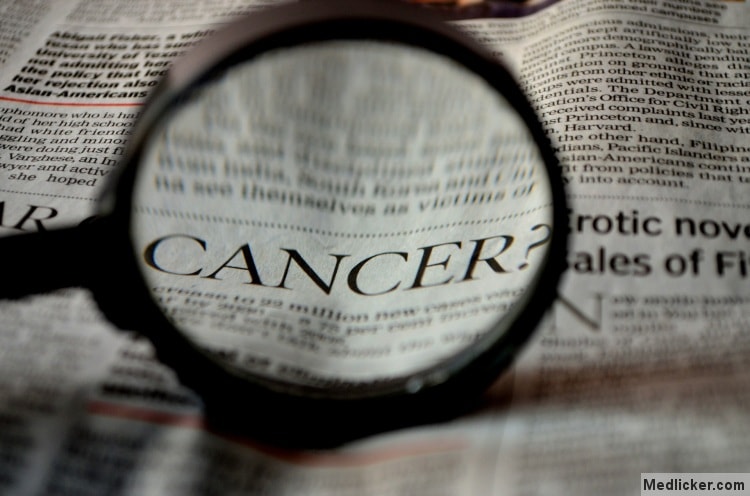
This is particularly necessary when you also suffer from discharge (blood, pus, any other liquid) from your nipple (6).
Other reasons
Some other factors behind appearance of pimple on nipples are leading a sedentary lifestyle, undertaking a lot of stress and mental tension and digestive disorders.
How to treat a pimple on your nipple?
If a pimple appears on your pimple, it is advisable to visit your doctor for a physical examination to rule out possibility of breast cancer.
A pimple may be actually just a Montgomery tubercle, as mentioned above. Many cases of breast cancer may manifest over the surface as a pimple that discharges fluid, that is painless and without any other sign.
So, a complete medical physical exam is important. Once you’re certain it is a pimple, you may start treating it. The most important thing to remember is that never burst, pop or squeeze a pimple on nipple. This action can possibly infect it and aggravate the situation. Infection from an infected pimple on nipple might spread to the inner breast tissue, resulting in abscess formation there.
Finding out the underlying cause of pimple formation is vital for proper treatment of pimple in the nipple.
The following measures help to remove and prevent appearance of bumps on nipples.
- Regular cleansing of affected area with mild cleanser helps to remove the dirt and germs and cure zit on nipple.
- If clogging takes place in Montgomery glands, then dab the nipple area with warm water which helps in softening the skin and then gently exfoliate the skin for removal of dead skin cells or dry milk.
- Pimple removing creams are available in the market, which include chamomile or calendula based creams. Application of these creams helps to clear the pimples.
- Application of purified hypoallergenic lanolin after breast feeding is beneficial for prevention of pimple development.
- If you have topical fungal infections that you must seek medical advice and start with a topical antifungal medicine or ointment.
- Use of non-comedogenic body lotion or cream may lead to pimple formation. Look for products labeled "non-comedogenic" or "oil-free." Comedogenic products have a tendency to block pores. Comedogenic ingredients include cocoa butter, pigments, coal tar and dyes and isopropyl myristate. If your skin secretes excess oil, you should always look for non-comedogenic lotion and cleansers.
- If the pimple is minuscle, or appears as a white head, apply gentle warm compress over it. This would soften it, and help excrete the accumulated sebum from inside it.
- A pimple that is red, inflamed or painful is likely to be infected. Its treatment requires topical antibiotic creams. Use mupirocin ointment twice a day. Keep applying it till the pimple vanishes.
- Consuming less sugar and supplementing with probiotics may also help in treating the pimples, according to DermNet NZ.
- It is crucial to treat infected pimples as soon as possible to prevent the spread of infection in the breast tissue.
- The suitable brand of oral contraceptive may decrease premenstrual acne. This is something that has to be discussed with the doctor.
- Some of the most stubborn forms of nipple acne may cause formation of cysts or lesions, which need prescription-strength medications. Cysts and lesions may cause scars, even after the pimples clears up.
- Do not pick your acne. Picking acne may cause scarring and provoke an infection.
- Dab a topical "zit zapper" over the pimples. This ointment should have a concentration of salicylic acid between 0.5 and 2 percent. Smear the cream directly over the nipple to dry out and heal the spots quicker.
- Usual treatment of a milk blister on nipple consists of four steps: apply moist heat before breastfeeding, wipe away the skin from the milk duct, nurse or pump with a hospital-grade pump, then follow up with medication to help in healing. You may need to repeat these steps for several days until the plugged duct opening becomes clear.
- An epsom-salt soak prior to nursing baby helps to clear the milk duct opening and also helps in healing. Use a solution of epsom salt — 2 teaspoons dissolved in one cup of water. First, dissolve the esposm salt in a small amount of very hot water, and then add more water to cool it down enough to soak in. Try to add this epsom-salt soak to your daily routine at least four times.
- A pimple that appears infected and secretes fluid might be a red light for breast cancer. Consult your doctor and get a mammogram done. Treatment options for breast cancer include radiation therapy, surgery or hormone therapy. Most women with breast cancer have tumors that contain hormone receptors. Hormone therapy is given to deactivate these hormones and fight the cancer's growth. Women who are ER-positive are more likely to respond to hormone therapy than patients who are ER-negative.
How to treat pimples on your nipples with home remedies?
Here is an overview of 17 home remedies for nipple bumps (7, 8, 9, 10, 11).
Salicylic acid soaps
Use a soap featuring cucumber and salicylic acid as its core ingredients. Cucumber and salicylic acid act as drying agents who prevent clogging of oil on hair follicles or pores. Be cautious though to not rub the area harshly as it may result in excessive loss of body oil. By gently scrubbing it, the dead cells are removed from the affected area while bathing. Exfoliation will also help cure the acne efficiently.
Healthy diet
Individuals, who eat more fresh vegetables and fruits and cut down their milk and sugar consumption, get lesser acne automatically. Eating five, six walnuts daily will help prevent skin inflammation as it contains anti-inflammatory agents like omega-3 fatty acids. Remember that omega-3 fatty acids are found in fish, such as herring, salmon and sardine, flaxseeds and leafy green veggies and it is better to use these healthy foods raw wherever possible as oxygen harms the acids.
Drink extra water
Water helps get rid of the toxins in body and boosts overall skin health. Recommended intake of water ranges from 2.2 liters to 3 liters (for females and males respectively). Besides water intake, significant reduction of sugar will help in prevention of pimple formation. Sugar causes production of more insulin, which in turn activates pimple producing hormones.
Drink green tea
This healthy beverage is rich in antioxidants, which help fight harmful free radicals in the body.

Free radicals cause a lot of harm to body cells and speed up the aging process. So never skimp on drinking sugar free green tea as a healthy alternative to drinks like smoothies, sodas and sweet juices if you want to get rid of pimples on nipple.
Aloe vera
Aloe Vera is an extremely effective anti inflammatory and soothing agent which makes it valuable in fighting acne problems. Its therapeutic effect is due to presence of lectins, anthraquinones and polysaccharides. Take some fresh Aloe Vera leaves and extract the gel out of the skin. Apply the gel on the pimples immediately after cutting it.
Fuller’s earth
Fuller’s earth works wonders on acne-prone or oily skin. It dries up excess oil from the skin and unblocks the pores from clogging. But it never over-dries the skin. Simply prepare its paste by mixing fuller’s earth, sandalwood and rosewater in equal quantity and apply on the affected nipple as a pack. Wash off after fifteen minutes using warm, clean water and rejuvenate your skin.
Radish seeds, milk and honey
Take one tablespoon of radish seeds, one tablespoon of milk and one tablespoon honey and blend these ingredients properly to prepare a smooth paste. Apply a thick layer on the pimples on nipples and allow it to work its effect for two hours. Wash it off with cool water and then moisturize the surface. This mixture has been used as a remedy for pimples since a long time and it has proved to be very effective. The paste can also preserved up to six days under refrigeration by storing it in an airtight container.
Cinnamon powder and lemon juice
Blend one tablespoon of freshly squeezed lemon juice with a tablespoon of cinnamon powder and churn the mixture properly.
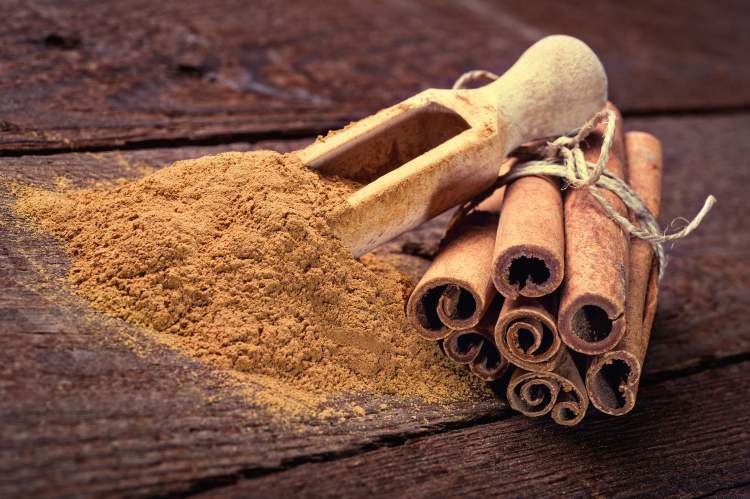
Apply a thin layer of this mixture on affected nipple. Allow mixture to dry for an hour before washing it off with cool water. This mixture can be used daily, but take care in case it causes irritation to your skin.
Toothpaste
It is a common home remedy for treating pimples on skin. The toothpaste dries up the acne which is caused by over active oil glands. Apply a thin layer of toothpaste on the pimple on nipple using a soft brush and allow it to dry for about half an hour. Wash it off gently with cool water and repeat the steps daily. Be careful in case it leads to irritation.
Tea tree oil
Take a cotton ball or Q-tip and soak it in tea tree oil. Dab the oil with the soaked cotton on the pimple on nipple and it will help to get rid of the acne effectively.
Garlic juice
Garlic contains antibiotics, which abolish acne causing bacteria. Peel a garlic clove. Crush the peeled clove and place it on the pimple on nipple. It will heal the acne quite fast. Instead of using crushed garlic, you can also squeeze the garlic juice out and apply it on your skin.
Ginger juice
Pimples developed due to some yeast infection in the skin folds can be treated by regular cleaning and applying ginger juice to the pimple several times a day.
Aspirin paste
Prepare an aspirin paste. Aspirin contains salicylic acid, which dries up zits and decreases inflammation caused by acne. This makes it the perfect material for treating pimple on nipple.
Crush 2 aspirin tablets and mix with one tablespoon of water and one teaspoon of honey. Apply to the affected area on pimple, and allow it to dry for ten minutes. Wash off with cool water.
Mud masks
Apply masks made of charcoal or mud or try using mask that contains mandelic acid.
Rub mud or charcoal mask on your pimples twice every week and then wash it off. A mask will cleanse the area and clear up your pores.
Mandelic acid masks should be usually applied ten to twenty minutes before taking a bath. Then, you should rinse the mask off with some clinically formulated acne wash.
Salt soak
Prepare a salt soak. Mix a liter of water with a cup of sea bath salt in a bathroom sink or large bowl.
Dip a soft towel or washcloth into this salt solution and apply to the nipple area. Squeeze the washcloth out and wash your affected area. Allow it to dry for about two minutes. Reapply the salt solution. Dip the washcloth in the salt solution and soak the cloth again, without wringing the cloth too strongly. Apply the saturated cloth onto your nipple gently. Repeat these steps five times and wring out the solution. Make a non oily moisturizer that prevents acne break outs and soothes the affected area. Wait for two to three hours after using the salt solution before putting on the moisturizer. Mix two tablespoons of buttermilk and 1 cup of sour cream into a small bowl and stir. Apply to your pimples and remove the excess mixture gently with a tissue.
Calamine lotion
For pimples that don’t go away, apply calamine lotion to the nipple with a cotton ball. You can leave calamine lotion on the pimples for entire day or apply before going to bed at night. The calamine lotion dries up excess oil and sebum.
Honey and apple cider vinegar
Concoct an oral remedy to clear away pimples from nipples.
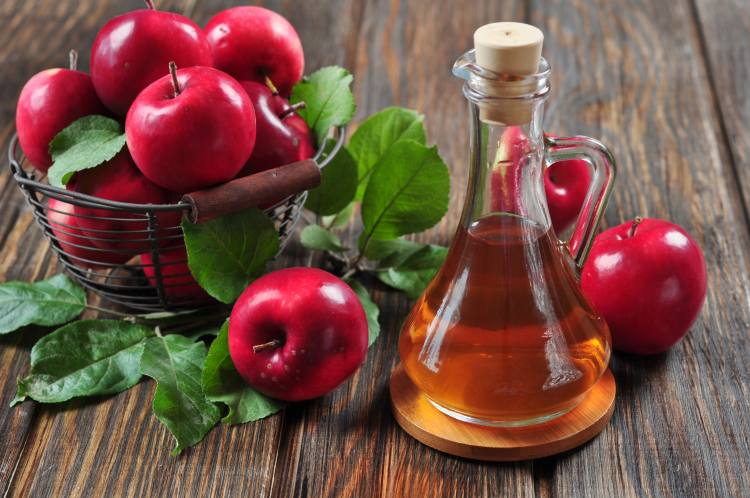
Warm two cups of hot water with one tablespoon of honey and two tablespoons of apple cider vinegar. Drink this remedy everyday to prevent appearance of pimples on nipples.
Precautions and prevention
Although all the above-mentioned treatments help treat pimples on nipple quite easily, but it is always better to prevent break out of acne on nipples by taking proper health and hygiene care like daily shower, following a healthy diet, drinking plenty of water etc. Drinking antioxidant rich green tree also helps remove pimples. Avoid drinking fizzy, sweet beverages and adopt an exercise regimen. Whenever you come return from outside, take a shower to remove dirt and sweat, which will otherwise block the skin pores.
Pimples appear again and again if the infected material inside them touches the adjacent area, imparting infection to it. They also recur due to unhealthy eating habits or weakness of immune system.
Other precautions are as follows:
- Many females of reproductive age notice appearance pimples on nipples just before their menstrual period. Wear a looser bra and pay careful attention to skin hygiene to help reduce breakouts.
- One of the key precautions to avoid break out of pimples on nipples is to wear looser clothing. If that is not possible, for example if you have to wear a bathing suit or wet suit, make absolutely sure to take a shower as soon as possible after removing tight garments. Dry your skin carefully, and avoid tight clothes and wet suits for at least two days.
- Another way to prevent formation of pimples on nipples is to wear a larger size bra when breasts swell and to pay special attention to maintenance of skin hygiene throughout the second half of the menstrual period.
- Don’t scrub your skin too roughly or you’ll increase risk of pimples. If you scrub too hard, you will dry up your skin's natural oils, and you'll exacerbate your acne. Always scrub affected area or acne prone area gently to get rid of dead skin cells.
- Take a shower regularly. If you don't take care of hygiene, you invite sebum, germs and bacteria to collect on skin surface, causing formation of pimples.
- Exfoliate skin gently. Exfoliating involves removing the dead layers of skin on the top layer of skin, or epidermis. Exfoliating can help reduce the incidence of pimples on nipple and help acne marks fade.
- Wear loose, breezy cotton or linen tops. These are the most breathable fabrics, and they let sweat escape into atmosphere instead of forming a layer on your nipples that blocks up your pores and invites germs and yeast to grow.
- Alter your eating habits diet. Eat some walnuts every day to lower skin inflammation. Eat more fresh fruits and vegetables. Incorporate lean protein, such as soy or poultry breast, into your diet, along with omega-3 fatty acids and whole grains.
- People, who eat more fresh fruits and veggies, and less milk and sugar, are less prone to pimple formation. Make sure you get two to three servings of healthy foods (especially leafy greens) per day.
- Drink lots of water and don’t allow your skin to dehydrate. Your skin is the largest organ in your body. Like all other organs, it needs plenty of water to stay hydrated and functioning in a healthy manner. Many doctors recommend that you drink between 9 and 12 cups of water per day to avoid pimple formation on nipples and other body parts.
- Cut sugary sweet drinks like juices, sodas and smoothies out of your diet. Sugars cause a rise in insulin level, which in turn triggers certain pimple producing hormones.
- Reduce use of dairy products. Dairy products contain hormones from cows, and these hormones stimulate your oil glands and pores. Choose skim milk. The hormones are mostly present in the fatty portion of the milk, so drinking skim will limit risk of acne.
- Wash your hands after using the bathroom. If you have germ-covered hands and then touch your breast, you transfer bacteria onto your nipple that can clog your pores. So wash your hands properly. You'll not only prevent pimples but also a variety of infections.
- Remove as much tension and stress from your life as possible. Doctors aren't completely sure why, but they are certain that there is a connection between stress and zit break out. Somehow, the cells that secrete sebum, which clogs skin pores, become unregulated when a person is under a lot of stress. Avoid worrying too much and relax.
- Get plenty of rest. The less you sleep, the more likely you are to experience mental duress throughout the day. And the more stress you go through, the worse your pimples become.
- Exercising is a therapy for many disorders. In this case, exercise boosts healthy circulation and helps reduce stress and anxiety. Run — or walk — around a park or your block, join a sports team, or hit the gym. Take a shower after you exercise. This is very important if you want to prevent formation of pimples on nipples. Your pores may become blocked with sweat after you exercise. If you bath and wash them away, there's a good chance that you might avoid development of pimples caused by simple neglect after exercising.
- Avoid eating processed foods, and increase your intake of vitamin and antioxidant-rich foods. The occasional piece of dark chocolate may give you the antioxidants you require, as dark chocolate is rich in antioxidants.
Things to remember
The best way to prevent pimples on nipple is to keep the skin of nipple clean and dry. Avoid wearing tight and synthetic materials that may irritate your skin, change out of swim wear and gym clothing quickly, shower with antibacterial soap after a long day or after a visit to the gym, avoid oily and heavily perfumed products on the skin of the breast and dry properly after a bath should help in preventing pimples. Select undergarments made of cotton or linen or any another breathable fabric, avoid lengthy hot water baths and perfumed bubbles. Exfoliate the skin gently but consistently. Follow a healthy diet with less intake of sugar and dairy products. Drink lots of water.
Pimples caused due to acne or Montgomery tubercles usually disappear after a short while. Ointments are required for treating pimples caused due to yeast infection and more stubborn forms of acne. If you are concerned about breast cancer, visit your doctor to get a thorough breast examination done.
| Written by: | Michal Vilímovský (EN) |
|---|---|
| Education: | Physician |
| Article resources: | See numbered references within the article. |
| Image resources: | Shutterstock.com and Pixabay.com |
| Published: | June 3, 2016 at 7:53 AM |
| Next scheduled update: | June 3, 2018 at 7:53 AM |
Related articles
Get more articles like this in your inbox
Sign up for our daily mail and get the best evidence based health, nutrition and beauty articles on the web.

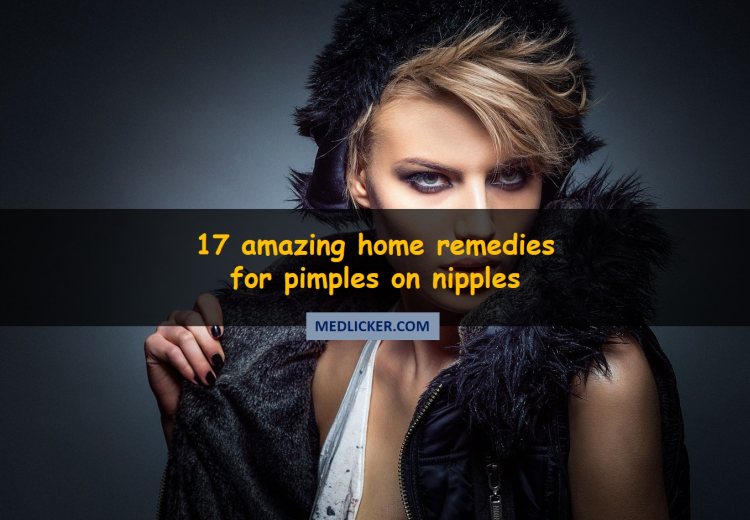
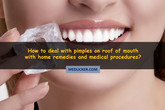
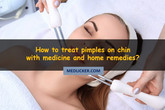
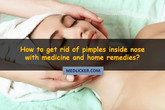
Ache in left arm that you should not ignore
Alkaline water dangers: why you should not drink it
How to Avoid Sleepiness While Studying?
23 Foods That Increase Leptin Sensitivity
Low dopamine (e.g. dopamine deficiency): causes, symptoms, diagnosis and treatment options
Swollen taste buds: the ultimate guide to causes, symptoms and treatment
Thin endometrial lining: causes, symptoms, diagnosis and treatment
Pimples inside nose: the complete guide
Holes in tonsils: definition, symptoms, treatment and prevention
How to deal with an ingrown hair cyst
Allegra vs. Zyrtec vs. Claritin
How to get rid of phlegm (excessive mucus) in throat? Detailed guide to medical and home remedies, symptoms and causes
What causes stomach ache after meals?
Allergy to penicillin and alternative antibiotics
Liver blood test results explained